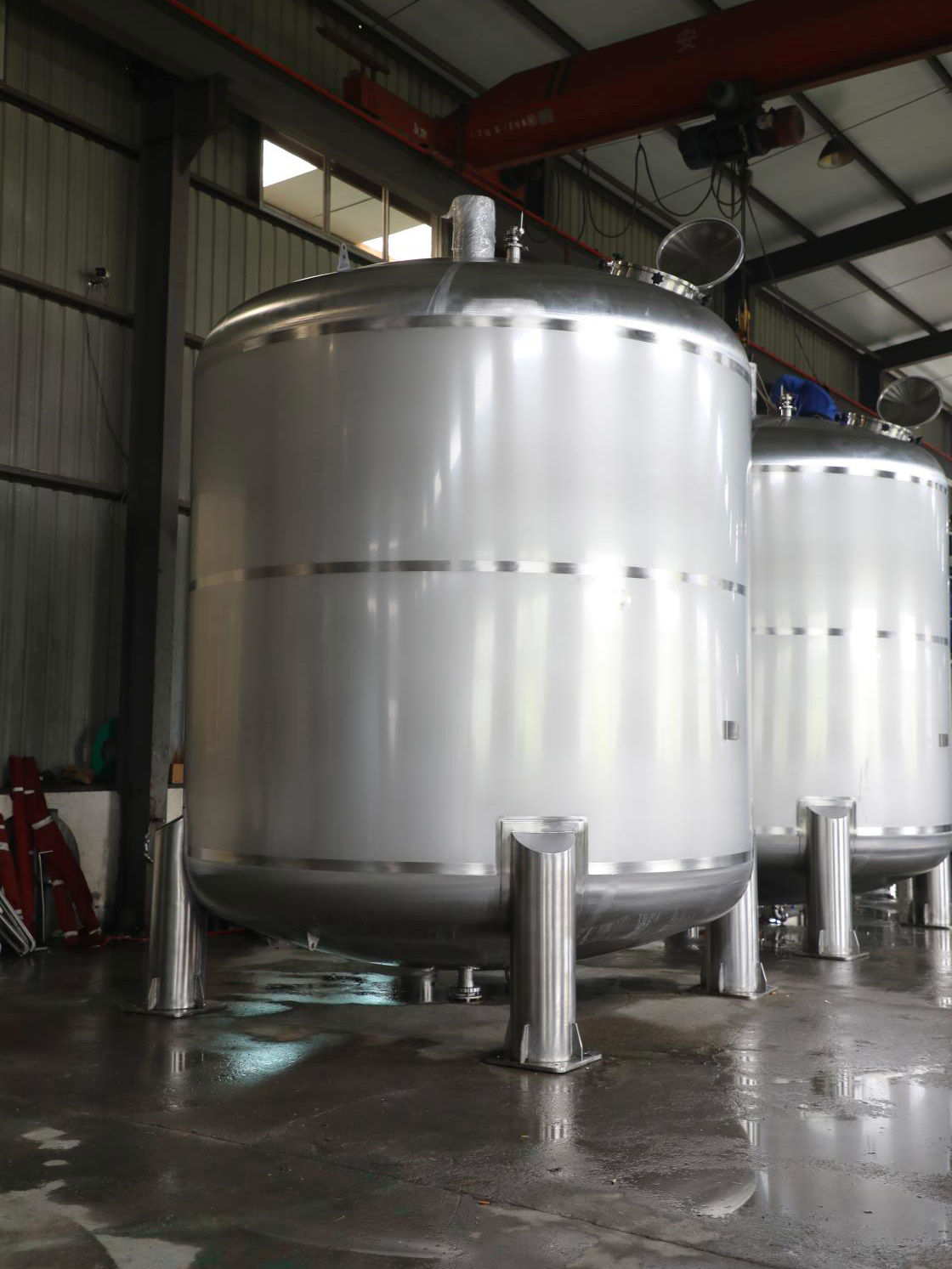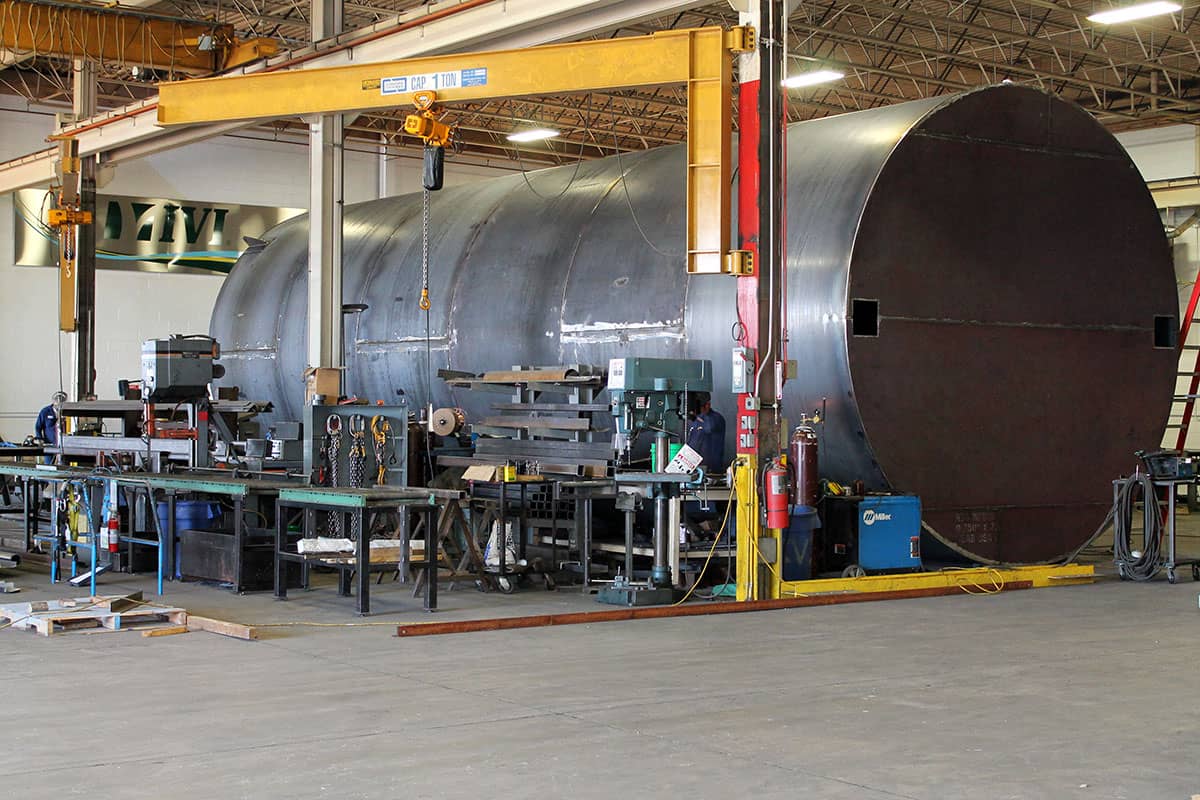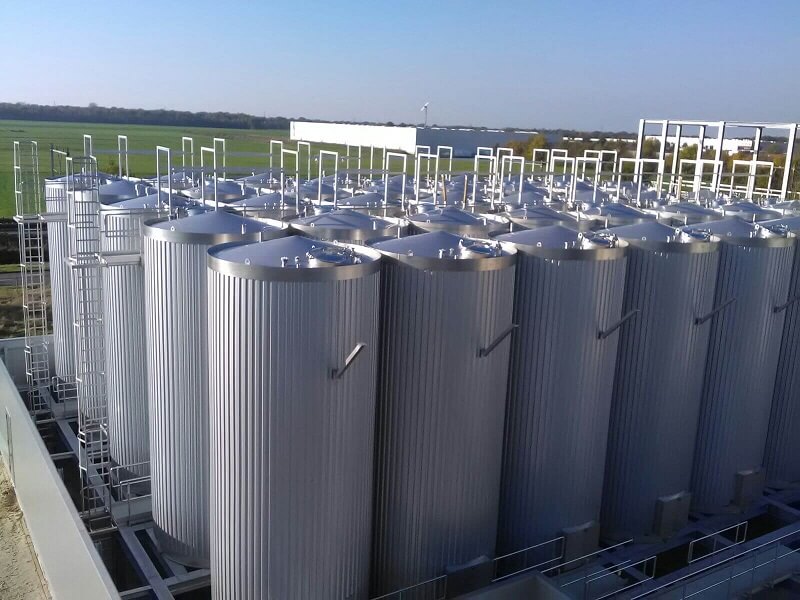Optimizing Safety and Toughness in Storage Tank Manufacturing: Best Practices Revealed
In the domain name of storage tank manufacturing, the important to make the most of safety and toughness has never been a lot more pronounced. Best techniques including material choice, cutting-edge modern technologies, and rigorous high quality control are important to mitigate dangers and improve functional longevity. Furthermore, the assimilation of normal evaluations and staff member training plays a pivotal role in promoting a safety-centric society. As industry criteria evolve, understanding exactly how these elements adjoin can cause substantial innovations. What essential methods might become essential in maneuvering the complexities of modern manufacturing?
Comprehending Product Selection
The option of ideal products is vital to guaranteeing resilience, security, and compliance with industry criteria when it comes to storage space tank manufacturing. The products chosen must withstand numerous ecological problems, including temperature fluctuations, harsh materials, and physical stressors. Typical products include carbon steel, stainless-steel, and numerous types of polymers, each offering unique advantages and negative aspects depending on the application.
Carbon steel is preferred for its stamina and cost-effectiveness, making it suitable for a wide variety of applications. It is prone to corrosion, demanding protective finishes or cathodic defense systems. Stainless-steel, while more expensive, uses superior resistance to rust and is optimal for keeping aggressive chemicals. Mindful consideration of the specific grade is important to assure compatibility with the stored materials.
In enhancement to rust resistance, factors such as tensile toughness, thermal conductivity, and convenience of manufacture should be assessed. Compliance with regulative standards, such as those established by the American Petroleum Institute (API) or the American Culture for Screening and Products (ASTM), is also critical. Inevitably, a detailed understanding of material homes and their communications with saved contents is important for the reliable and secure procedure of tank.
Implementing Advanced Technologies
Implementing advanced modern technologies in storage tank manufacturing can significantly improve functional effectiveness and security. Smart tracking systems make it possible for real-time data collection, while automated manufacture methods enhance production procedures. Furthermore, predictive upkeep tools can help prepare for equipment failings, reducing downtime and upkeep expenses.
Smart Monitoring Equipments
The assimilation of wise tracking systems in storage tank manufacturing represents a considerable innovation in operational efficiency and safety. These systems take advantage of progressed innovations such as IoT (Net of Things) sensing units, real-time information analytics, and cloud computer to supply continuous oversight of container problems - Texas Storage Tank Manufacturing. By keeping track of variables such as temperature level, pressure, and liquid degrees, manufacturers can find abnormalities early, minimizing the threat of ecological risks and prospective failures
Executing smart monitoring systems permits boosted anticipating maintenance approaches. Rather than adhering to a stiff maintenance timetable, drivers can utilize data analytics to figure out the suitable times for interventions based on actual container performance. This not only expands the life of the storage tanks but additionally decreases downtime and connected costs.
Additionally, wise tracking systems enhance compliance with regulative criteria. Automated reporting functions can streamline the process of recording safety metrics and environmental impact, guaranteeing that suppliers continue to be aligned with sector guidelines
Automated Manufacture Methods
Improvements in smart surveillance systems lay a solid structure for the fostering of automated manufacture strategies in storage tank manufacturing - Oil & Gas Storage Tank Fabrication. These techniques leverage sophisticated modern technologies such as robotics, computer numerical control (CNC) machining, and synthetic knowledge to boost accuracy, effectiveness, and safety and security throughout the fabrication process
Robot systems can carry out repeated tasks with unrivaled accuracy, substantially reducing human error and enhancing general item high quality. CNC makers permit elaborate styles and requirements to be performed constantly, making sure that each storage tank satisfies strict industry criteria. The combination of fabricated intelligence makes it possible for real-time information analysis, optimizing the manufacturing procedure by identifying bottlenecks and suggesting improvements.
In addition, automated fabrication strategies add to a more secure work setting by reducing the demand for manual work in hazardous conditions. This not only safeguards staff members but also lowers liability for producers. The execution of these modern technologies promotes a streamlined operations, lowering production time and costs while enhancing item toughness.
Anticipating Maintenance Equipments
Predictive upkeep devices stand for a considerable advancement in the functional effectiveness of storage tank manufacturing. By leveraging sophisticated technologies such as Net of Things (IoT) sensors, artificial intelligence algorithms, and information analytics, suppliers can keep track of the condition of storage space containers in real-time. These tools make it possible for the early detection of prospective failures, allowing for timely interventions that stop pricey downtimes and improve safety and security.
Executing predictive upkeep entails accumulating information on various indications, such as vibration, temperature level, and stress degrees. This information is after that analyzed to determine patterns and anticipate tools failures prior to they happen. Subsequently, maintenance can be set up at excellent times, decreasing unnecessary costs related to reactive upkeep.
Furthermore, anticipating upkeep devices contribute to enhanced sturdiness by making certain that devices runs within its best criteria. This not only extends the lifespan of storage space containers yet additionally minimizes the risk of catastrophic failings, which can bring about environmental hazards and financial losses.
Ensuring Quality Assurance Standards
Quality assurance standards are fundamental in the storage tank manufacturing sector, making sure that products meet safety, durability, and governing needs (Texas Oil & Gas Storage Tank Fabrication Authority). These criteria incorporate a detailed structure that governs every facet of the manufacturing procedure, from raw material selection to final item screening. Implementing rigorous quality assurance procedures reduces threats connected with tank failings or leakages, which can have severe ecological and financial effects
Secret parts of quality assurance consist of defined requirements, standardized operating treatments, and routine training for employees. Automated systems can help in monitoring manufacturing processes, enabling real-time data collection and evaluation. This not just improves the accuracy of the results yet also promotes swift restorative actions when deviations happen.
Furthermore, involving third-party examination companies can supply an added layer of assurance, making sure conformity with sector laws and requirements. Documentation of all quality assurance tasks is additionally vital, as it offers as a referral for audits and continuous enhancement efforts.
Inevitably, adherence to stringent quality assurance standards promotes count on among stakeholders, including clients and regulative bodies, while promoting a society of quality within the company. The combination of these techniques is essential for accomplishing long-lasting success in the storage tank producing market.
Performing Normal Evaluations
While the manufacturing process establishes a foundation for storage tank integrity, conducting regular assessments is crucial for assuring recurring conformity with safety and security and efficiency requirements. These assessments offer to recognize potential issues that might emerge in time, such as deterioration, leakages, and structural weaknesses. By applying a regular assessment timetable, suppliers can proactively attend to these worries before they escalate right into more substantial problems.
Normal evaluations need to include both visual assessments and comprehensive analyses using sophisticated technologies, such as ultrasonic screening or radiography. This complex approach allows an extensive assessment of the tank's problem and aids in confirming that all components continue to be within regulative conformity. Documents of inspection searchings for is crucial, as it offers a historical document that can assist in pattern evaluation and future decision-making.
Engaging skilled specialists for evaluations warranties that experienced eyes are inspecting the storage tanks. Their proficiency can lead to the recognition of subtle problems that might go unnoticed by untrained employees. Ultimately, regular inspections are an essential element of storage tank upkeep, adding especially to the durability and integrity of the storage tanks, while securing conformity with industry standards.
Focusing On Employee Precaution

Executing comprehensive safety training programs gears up staff members with the understanding to identify and alleviate potential dangers. Normal drills and correspondence course strengthen risk-free practices, making sure that workers continue to be watchful. Individual protective devices (PPE) have to be readily offered and purely applied, including headgears, gloves, and breathing protection, customized to the certain risks of the manufacturing atmosphere.
Developing clear interaction networks cultivates a society of security. Workers need to really feel equipped to report unsafe conditions without worry of retaliation, promoting proactive risk management. Safety and security audits and event examinations are essential for identifying weak points in existing practices, enabling constant enhancement.

Environmental Conformity Methods
Incorporating robust environmental compliance strategies right into storage tank manufacturing is important for decreasing the ecological footprint of operations. These methods need to encompass adherence to ecological policies, efficient resource monitoring, and sustainable products sourcing.
Producers need to stay abreast of regional, national, and worldwide guidelines regulating discharges, waste monitoring, and water use. By using compliance monitoring systems, firms can guarantee and track adherence to these regulations effectively
Applying waste reduction strategies is essential. This consists of recycling scrap materials, utilizing closed-loop systems for water usage, and decreasing harmful waste generation. Such methods not only comply with ecological criteria however likewise boost operational efficiency and cost-effectiveness.
In addition, promoting connections with suppliers that focus on sustainability assurances that the products used in container production are environmentally pleasant. Utilizing materials with reduced environmental effects, such as bio-based composites or recycled steels, can substantially improve the sustainability account of items.
Continuous Training and Growth
In the fast-evolving landscape of storage tank manufacturing, constant training and development play an important duty in preserving high criteria of high quality and safety. As modern technology and guidelines development, it is critical that employees are outfitted with up-to-date knowledge and skills to browse new obstacles successfully.
Applying a robust training program warranties that workers are acquainted with the latest market criteria, safety procedures, and innovative manufacturing methods. This not just enhances their private expertises but likewise cultivates a culture of safety and liability within the organization. Routine workshops, on-the-job training, and qualification training courses can help workers remain notified concerning arising technologies and finest methods.

Continuous development initiatives can enhance staff member engagement and retention. When workers feel valued and invested in their expert growth, they are most likely to contribute favorably to the company's purposes.
Buying continuous training and development ultimately leads to improved functional performance, lowered mistake prices, and increased conformity with regulative requirements. By prioritizing workforce education, storage tank producers can ensure that they remain competitive while upholding the highest degrees of security and durability in their items.
Often Asked Concerns
What Are the Costs Connected With Storage Tank Manufacturing?
The expenses related to storage tank manufacturing encompass resources, labor, governing conformity, transport, and installment. In addition, variables such as layout intricacy, dimension, and environmental factors to consider can substantially affect general manufacturing expenses.
Just How Do Weather Impact Storage Tank Sturdiness?
Weather considerably influence storage tank longevity, as extreme temperatures, moisture, and precipitation can result in product destruction, corrosion, and architectural failure. Normal evaluations and appropriate products are vital to reduce these damaging impacts.
What Sorts of Insurance Coverage Are Needed for Storage Tank Manufacturers?

Just How Can I Pick a Reliable Storage Tank Distributor?
To select a reputable storage tank provider, assess their sector experience, item high quality, qualifications, and consumer evaluations. Additionally, analyze their responsiveness and assistance services to assure they line up with your operational needs and safety criteria.
What Are the Normal Lead Times for Storage Tank Production?
Regular lead times for storage tank manufacturing vary based on intricacy, products, and vendor capacity, usually ranging from a couple of weeks to a number of months. Factors such as style specifications and regulative needs can additionally affect timelines considerably.
When it comes to storage space container manufacturing, the choice of ideal materials is critical to ensuring durability, security, and compliance with market standards. Carrying out advanced innovations in storage space container manufacturing can significantly improve functional efficiency and security. Quality control criteria are fundamental in the storage container manufacturing market, ensuring that products fulfill safety and security, sturdiness, and governing requirements. While the manufacturing process establishes a structure for storage space container honesty, conducting routine examinations is important for ensuring continuous conformity with safety and security and performance requirements. In the fast-evolving landscape of storage container manufacturing, continual training and growth play an important function in preserving high requirements of high quality and safety and security.